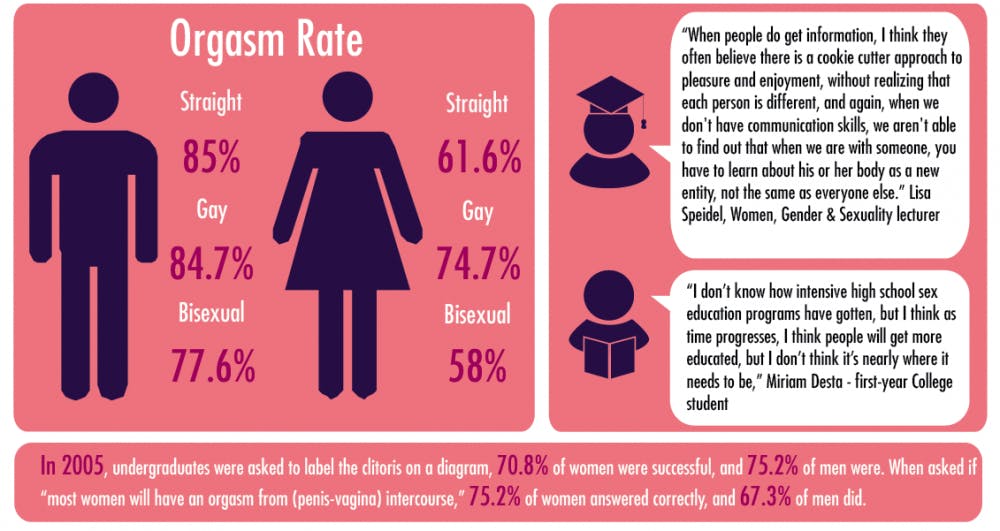In the seminal 1989 film, “When Harry Met Sally,” Sally (Meg Ryan) shows an incredulous Harry (Billy Crystal) how women fake orgasms after he claims that he’s left every woman he’s ever been with satisfied.
A study conducted 25 years later found that over 20 percent fewer straight women than men report having orgasms most or every time they have sex.
A few explanations have been offered for this phenomenon, dubbed as “the orgasm gap.”
The first encompasses everything from Hollywood movies to descriptions of the pull-out method in high school sex education place the emphasis on the male orgasm, sometimes even indicating it is the male who determines when sex is over.
Another suggestion says women are often unable to orgasm due to stress. This may be due to factors like worries about how they look during intercourse, whether they are performing “correctly,” providing and reacting enough for a partner or that they might not be orgasming the “right” way.
Finally, some suggest this may simply be due to a lack of working knowledge of women’s anatomy and pleasure, as well as a lack of communication.
“There is so much fear of asking about what feels good, or for women to speak up about what they would like,” said Lisa Speidel, a Women, Gender & Sexuality lecturer. “I think this ties into our stereotypical expectations of what it means to be feminine and masculine, and if you really buy into these roles, that means silence in the bedroom.”
For women, sexuality plays a significant role in determining the size of the orgasm gap — more lesbian women report having orgasms most or every time they have sex than straight women, and slightly fewer bisexual women do. The percentage is almost exactly the same for gay and straight men, but about seven points lower for bisexual men. However, the percent of lesbian women who say they orgasm most or every time they have sex is still lower than the percentage of bisexual men.
“I feel like in the queer community, there’s a lot of sex-positive conversation, so that might be why lesbian women have more orgasms than straight women, and gay men have as many as straight,” fourth-year College student Jason Jones, a LGBTQ center volunteer, said.
According to Speidel, most people’s two main sources of information about sex are from to different ends of the spectrum: high school sex education, which tends to be either abstinence-only or fairly fear-based teachings about protection, procreation and disease; and porn.
While porn can contain positive representations of people enjoying their sexuality, much of it provides unrealistic portrayals of what both men and women enjoy, and is especially inaccurate in regards to how it shows women orgasming, Speidel said.
“There is very little comprehensive education out there that addresses such issues as respect, consent, communication, desire and pleasure,” Speidel said.
At the University, however, the Peer Health Educators, or PHEs, are working to improve this, expanding their outreach to include communication, in addition to sex and protection basics.
“Opening a discussion where you can admit that you don't where the clitoris is, or asking what your partner would appreciate sexually or knowing your limits so you can say no to certain things can all have a positive impact on your sexuality and could in theory work to alleviate the ‘orgasm gap,’” fourth-year College student and PHE Outreach Coordination Intern Connor Roessler said.
The PHEs are also working to open up discussion on an expanding the definition of sex beyond just vaginal intercourse. An example of this can be found on their website in an April 2 blog post, “Masturbation From a Different Angle.”
This article has been updated to include information about peer health educators.
This article previously misidentified the author of the Peer Health Educators blog post and has been updated to remove that person's name.







